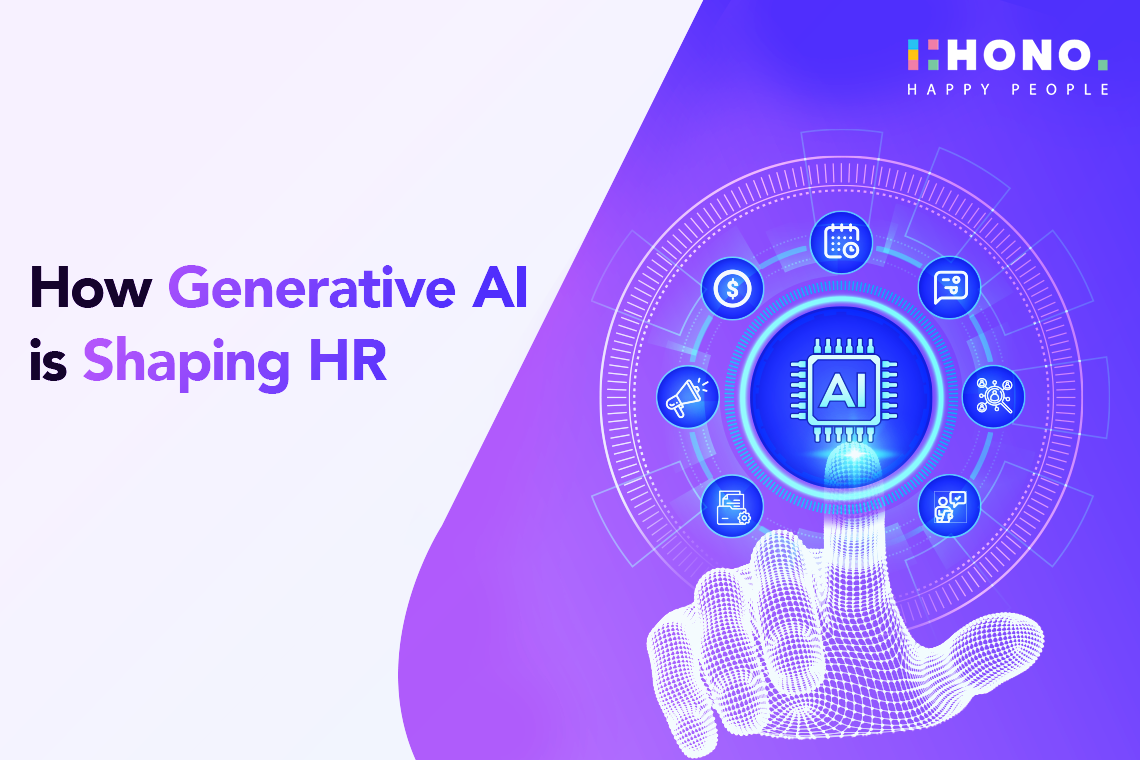An employee pulse survey is a powerful tool for businesses. They help you understand what your employees are thinking and feeling, which is important in today's fast-paced business world.
In this blog, we will help you create effective employee surveys. Whether you work in HR or manage an enterprise, this information is essential for creating and improving a happy workplace. We will also cover the basics of these surveys including understanding employee survey results and the employee engagement survey questionnaire.
Significance of Employee Pulse Surveys
Keeping your finger on the pulse of your workforce is important. Employee pulse surveys are the key to understanding your employees and making informed decisions for their betterment within the company.
Employee pulse surveys provide quick and valuable feedback. They give you a snapshot of what your employees are experiencing, thinking and feeling. This is like having a real-time report card for your organization. You can understand employee satisfaction, identify potential issues and adjust accordingly.
Enhancing Employee Engagement
By regularly asking your team for their input through well-crafted employee engagement survey questionnaires, you show them that their voices matter. This improves a positive workplace culture, where employees feel valued and heard. Whether it is adjusting policies, improving processes or implementing changes, you are doing it with your employees' insights in mind. This leads to more effective and employee-friendly choices.
Also Read: 5 Steps to Implementing a Cloud-Based Employee Pulse Survey
In a nutshell, employee pulse surveys are your radar, guiding your organization through the complexities of modern business. They provide immediate, actionable insights, making them a powerful tool for any company, big or small. So, let's explore how to create surveys that deliver these valuable results.
Setting Clear Objectives
Setting clear objectives for your employee pulse survey is like charting a course. It is important because it gives purpose to your survey and ensures you are collecting the right data.
Why it Matters
Imagine a survey without a goal. It is like setting sail without knowing where you are heading. Whether you aim to improve employee engagement, pinpoint workplace issues or achieve other objectives, defining them helps you create a survey that delivers meaningful results.
Here are a few examples of objectives
Boosting Engagement: If your goal is to enhance employee engagement, you can design questions that probe into factors like job satisfaction, work-life balance and team collaboration.
Identifying Issues: To uncover workplace issues, focus on questions about challenges employees face, communication problems or concerns about policies.
Choosing the Right Questions
Now that you have clear objectives, it is time to craft the right questions for your employee engagement survey questionnaire.
Effective questions are the heart of your survey. They need to be clear, relevant and easy to answer. There are two main types of questions you can use: open-ended and close-ended.
Open-ended questions allow employees to express themselves freely. They are great for capturing in-depth insights but might take longer to analyze.
Close-ended questions provide predefined options, making analysis quicker. They are useful for gathering specific data.
Survey Design and Format
Looks indeed matter. Therefore, the design and format of your survey play a significant role in how it is received and completed.
A well-designed survey is inviting and easy to navigate. Consider the layout, colors and font choices. Keep it professional and ensure it aligns with your company's branding. Secondly, a user-friendly survey ensures a smoother experience for respondents. Avoid complicated jargon and convoluted structures. Clarity and simplicity are key.
These elements combined create a professional yet user-friendly survey that engages employees effectively.
Data Collection and Analysis
Now that you have set your objectives and designed a user-friendly survey, let's talk about collecting and analyzing the data. Efficiency in data collection is important. You want as many employees as possible to complete the survey. Consider using digital platforms, email or even in-house kiosks. Make it accessible and convenient.
To make sense of the data, you will need to employ statistical methods. These methods can help you identify trends, patterns, and areas that need attention. It is like deciphering the language of your workforce.
Timing and Frequency
Determining when and how frequently you should conduct employee pulse surveys is important. The timing of your survey matters. You want to capture insights at meaningful points. For example, consider conducting surveys after significant company changes or events. While the frequency of your surveys may vary, industry benchmarks and best practices can guide you. Most companies opt for quarterly or monthly pulse surveys, but this can vary based on your unique needs.
Employee Privacy and Data Security
Keep your employees' trust a priority while creating pulse surveys. Addressing data privacy and security concerns ensures their confidence in the survey process. Explain how you will protect their data. Emphasize that responses are confidential and anonymous and that their information won't be shared. Ensure your survey complies with data protection laws and regulations to maintain the highest standards of privacy and security.
Communicating Results
Collecting data is just the first step. Effectively communicating employee survey results to both employees and management is important.
- Summarize the key findings and insights from the survey. Use clear language that everyone can understand.
- Provide tips on how to turn survey results into actionable changes. This is where real improvements in employee engagement and satisfaction happen.
- Real-life examples of companies effectively using employee pulse surveys can inspire and guide your efforts.
- Share cases where businesses have achieved tangible benefits through well-designed surveys. This adds credibility to the process and motivates others to follow suit.
By following these steps and incorporating the principles of clear objectives, well-crafted questions, user-friendly design, efficient data collection, and effective communication, you'll be on your way to creating a professional and actionable employee pulse survey. Feel free to ask if you need more details on any of these sections.
In this journey through the world of employee pulse surveys, we have covered a lot of ground. Let's tie it all together.
Clear Objectives: Start with a clear goal for your employee pulse survey. It gives your survey purpose and ensures you collect the right data.
The Right Questions: Crafting well-structured questions is vital. Choose between open-ended for in-depth insights and closed-ended for specific data.
Survey Design: A user-friendly design with a professional touch is key. Keep it simple, clear, and aligned with your brand.
Data Collection and Analysis: Efficient data-gathering methods and statistical analysis are your tools for making sense of the responses.
Timing and Frequency: Consider when and how often to conduct your surveys, based on your unique needs and industry benchmarks.
Privacy and Security: Maintain trust by ensuring data privacy and security. Compliance with regulations is a must.
Communication: Summarize key findings and provide insights on how to act on them to create positive change.
Start Your Journey
Now that you have acquired the knowledge and tools, it's time to act. With HONO Design your own employee pulse survey and begin the journey to unlock immediate insights into your workforce. Your employees' thoughts and feelings are your compass in navigating the ever-changing landscape of the modern workplace. Embrace the power of the employee pulse survey to foster a positive workplace culture and maintain a highly engaged workforce.
So, what's your first step in this exciting journey? Start designing your employee survey, and watch the results transform your organization.
Request a Demo Now!
Frequently Asked Questions
What is an employee pulse survey, and why is it important for our organization?
An employee pulse survey is a brief, frequent survey designed to gather real-time feedback from your employees. It's vital for your organization because it provides immediate insights into employee sentiments, which can help you make informed decisions. By regularly using employee pulse surveys, you can stay attuned to your workforce's needs and enhance employee engagement.
How do I define clear objectives for my employee pulse survey?
To define objectives, start by identifying what you want to achieve with the survey. Are you looking to improve employee engagement, pinpoint workplace issues, or measure job satisfaction? Once you've established your goals, structure your survey questions to align with these objectives.
What's the difference between open-ended and closed-ended questions in an employee engagement survey questionnaire?
Open-ended questions allow employees to provide detailed, unstructured responses. They're ideal for collecting qualitative data and insights. Closed-ended questions offer predefined response options and are useful for quantitative data. By using a mix of both, you can gather a comprehensive range of feedback and insights.
How do I ensure the employee pulse survey design is user-friendly?
A user-friendly design is crucial for encouraging employees to participate. Keep the survey layout simple and clean, use plain language, and ensure it's easily accessible on various devices. Consider your organization's branding in the design to maintain a professional appearance.
What's the recommended frequency for conducting employee pulse surveys?
The frequency of pulse surveys can vary, but common intervals include monthly, quarterly, or during critical events or changes within the organization. Consider industry benchmarks and your organization's unique needs. Regular surveys help maintain a consistent feedback loop and provide a consistent stream of data to make decisions based on immediate insights.

.png?width=70&height=70&name=Team%20HONO%20logo-01%20(1).png)








.jpg)
